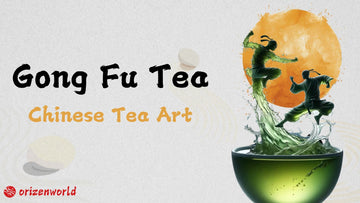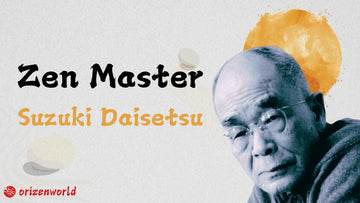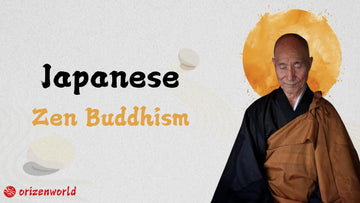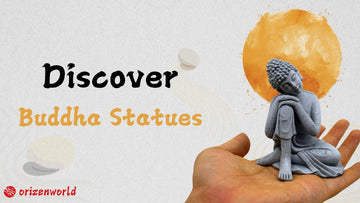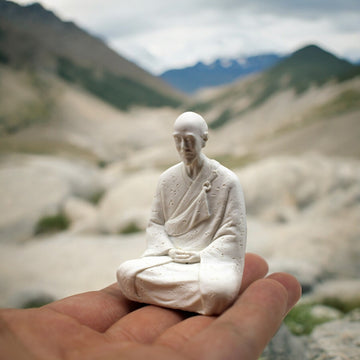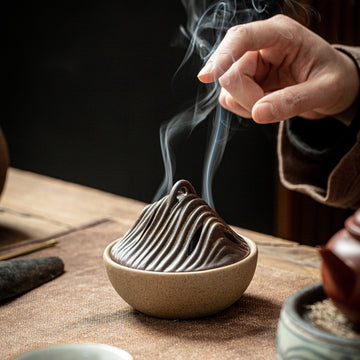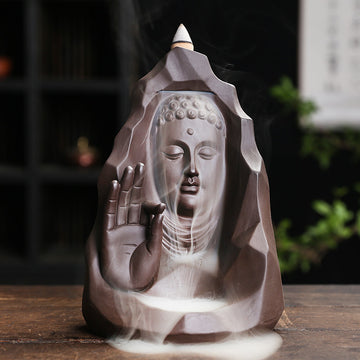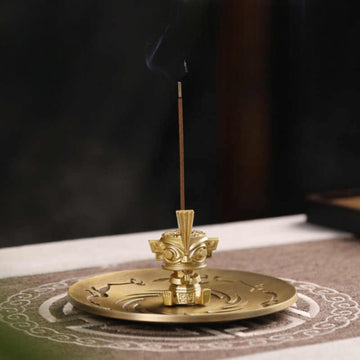If you've ever visited China or spent time in a Chinatown, you might have heard about a unique Chinese tea style called Gong Fu Tea, also known as Kung Fu Tea. At first glance, the name might conjure an image of kung fu masters sparring while brewing tea—quite entertaining, but not accurate! While there's no martial arts involved, Gong Fu Tea does embody the essence of "kung fu" through its meticulous techniques, precision, and artistry.
Curious to learn more? In today’s article, I’ll uncover the fascinating details of this traditional tea practice, from its history and cultural significance to the precise brewing techniques that truly make it a “kung fu” of tea preparation!
Gong Fu Tea is not the name of a specific tea or tea category but rather a meticulous tea-brewing technique. The term "Gong Fu" reflects the skill and effort required to perfect this art.
Originating from the Fujian and Guangdong provinces of China, Gong Fu Tea is a traditional tea-drinking custom among the Han people in these regions. It is also an integral part of welcoming and hosting guests. This method emphasizes harmony among the tea leaves, utensils, water, and heat, requiring precision and a well-structured, calm approach. The process blends scientific precision with an appreciation for the aesthetics of the brewer’s movements.
Gong Fu Tea is an artful tea-brewing tradition, akin to the expressive craftsmanship of cocktail-making in a bar, blending precision with elegance.
To better understand the artistry of Gong Fu Tea, imagine visiting a cocktail bar where a skilled bartender crafts your drink with flair, shaking the cocktail shaker with expressive and fluid movements. Similarly, Gong Fu Tea embodies a performance art quality, where the brewer’s graceful gestures enhance the experience. It is a display of tradition and elegance intertwined with hospitality.
Gong Fu Tea is not just about making tea; it is about creating a moment of mindfulness and connection. The ritualistic nature of the process encourages the brewer and the drinker to slow down, appreciate the tea’s intricate flavours, and immerse themselves in the beauty of the moment. Through its rich cultural significance and refined brewing techniques, Gong Fu Tea stands as a timeless symbol of Chinese tea culture.
The origins of Kung Fu Tea can be traced back to ancient China during the Tang dynasty, a golden era of tea culture. With the spread of Buddhism, tea drinking became integral to monastic life, offering refreshment to monks and guests alike. This widespread custom eventually permeated Chinese society, and Lu Yu’s "The Classic of Tea" (茶经) emerged as the foundational text for tea practices, including the techniques that later inspired Chaozhou Gong Fu Tea.
By the Song dynasty, Gong Fu Tea began to flourish in Chaozhou, Guangdong. Renowned for its meticulous preparation, it became a hallmark of daily life and hospitality. As described in historical poems, families embraced this tradition to unwind after long days, finding solace in a single cup of tea. This era also saw tea being served at imperial banquets, solidifying its cultural prominence. The legend of Zhao Song emperors fleeing to Chaozhou and enjoying Phoenix Mountain tea further highlights the deep roots of tea culture in the region.

The Song dynasty marked the pinnacle of Chinese tea culture, with Gong Fu Tea gaining widespread popularity and refinement.
During the Ming dynasty, advancements in tea production and brewing techniques propelled Gong Fu Tea to new heights. The introduction of loose-leaf tea, coupled with local innovations, fostered a vibrant tea-drinking culture. Rituals like "tea soup presentation" became customary, emphasizing respect and refinement. The art of brewing tea developed into a performance, blending precision and elegance.
By the Qing dynasty, Chaozhou Gong Fu Tea was renowned across China. Innovations in tea cultivation and processing, such as wok-frying techniques for Oolong tea, elevated its reputation. Women played a significant role in tea production, often celebrated in local folklore. Today, Gong Fu Tea remains a living tradition, enriched by centuries of history, and continues to be cherished for its artistry and cultural significance.
The term "Kung Fu" in Kung Fu Tea doesn’t just reference martial arts—it embodies the essence of skill, effort, and dedication. Brewing this tea requires a mastery of delicate techniques honed over time. The process is meticulous, blending patience and precision to unlock the tea's full potential. Every step, from selecting the tea leaves to pouring the brew, reflects the philosophy of putting thoughtful effort into creating a harmonious and flavourful experience.
The practice of Kung Fu Tea relies on specific tools and equipment, each chosen for its role in enhancing the brewing process. A small clay teapot, often made from Yixing clay, is central to the ritual due to its ability to retain heat and develop a rich patina. Tea cups, usually small, concentrate the aroma and flavour of the tea, while a tea tray catches spills and creates a tidy workspace. Accessories like the tea pet, a small figurine that is rinsed with tea for good luck, add a playful and cultural touch to the process.

The tea set is essential in the Gong Fu Tea ceremony, enhancing both the brewing process and the overall experience.
The type of tea used plays a crucial role in the Kung Fu Tea experience. Oolong, Pu-erh, and green teas are among the most popular choices, with Pu-erh particularly favoured for high-end tea ceremonies. Its complex, earthy flavours deepen with age, making it a prized selection for tea connoisseurs.
Brewing Kung Fu Tea is not a simple act of steeping leaves; it is a multi-sensory experience. The sound of pouring water, the aroma of the tea, and the beauty of the tools create an immersive ritual. The care and attention put into each detail highlight the connection between the brewer and their craft.
Ultimately, Kung Fu Tea is an art that celebrates the harmony of effort, tradition, and enjoyment. It transforms tea-making into a meaningful practice, rooted in both culture and mindfulness.
Kung Fu Tea offers numerous physical health benefits, making it a wholesome alternative to alcoholic beverages. The tea used, such as Oolong or Pu-erh, is rich in antioxidants that help combat free radicals, promoting overall health and potentially reducing the risk of chronic diseases. Additionally, it aids digestion and supports metabolism, making it an excellent choice for daily consumption.
Brewing and drinking Kung Fu Tea is also a meditative experience that enhances mental and emotional well-being. The deliberate, ritualistic process encourages mindfulness, helping to calm the mind and reduce stress. Engaging in this focused practice creates a peaceful moment amidst the chaos of daily life, offering a sense of inner balance and tranquility.
On a social level, Kung Fu Tea serves as a bridge for cultural and personal connections. It is a cherished tradition in Chinese culture, often forming the foundation for meaningful conversations and relationships. For those engaging in business with Chinese counterparts, sharing tea is more than a gesture—it is a vital part of building trust and rapport. Many business deals are finalized at the tea table, highlighting the cultural significance of tea in professional settings.

Learning tea table etiquette can strengthen relationships with Chinese business partners, as tea ceremonies foster trust and cultural connection.
Ultimately, Kung Fu Tea is a harmonious blend of health, mindfulness, and social connection. It is more than a drink; it is a practice that nurtures the body, mind, and relationships, embodying the richness of Chinese tea culture.
Kung Fu Tea etiquette closely follows traditional Chinese tea ceremony practices, emphasizing respect and mindfulness. The tea server plays a significant role, preparing the tea with precision and care. A key aspect of the ritual is offering tea with grace, ensuring that the guests feel valued and respected. In some cases, the server may gently pour the tea into small cups, always mindful of the guest's preferences.
Symbolism is woven throughout the tea ceremony, with specific gestures holding deep meaning. For instance, when someone serves you tea, it is customary to tap the table with your index finger as a sign of gratitude. This gesture, known as "knocking on the table," symbolizes humility and appreciation for the service. It is a subtle but powerful way to acknowledge the gesture and show respect for the tea brewer.

There are various tea etiquette practices throughout the tea process, each symbolizing respect, mindfulness, and cultural significance in tea ceremonies.
There are certain dos and don'ts when serving or enjoying Kung Fu Tea. For example, it is important to hold the tea cup with both hands as a sign of respect. When offering tea to others, always pour first for the eldest or the most senior person in the group, following the traditional hierarchy of respect. It is also considered impolite to rush the tea process, as the art of brewing tea is about savoring every moment.
Following these etiquette and rituals not only enhances the tea experience but also deepens the cultural understanding and appreciation of Kung Fu Tea.
The art of brewing Kung Fu Tea begins with the careful selection and preparation of tea leaves. High-quality tea leaves, such as Oolong, Pu-erh, or Green Tea, are essential to creating the perfect cup. The leaves should be whole, not broken, to ensure a full flavor profile. To prepare them, it's important to gently open the leaves to allow their aroma and essence to be released during the brewing process.
The brewing process itself involves several steps, each performed with precision. First, the tea leaves are placed into a teapot or gaiwan. A common initial step is to rinse the leaves with hot water to remove impurities and "wake up" the leaves, allowing them to open up. This step is done quickly to avoid over-extraction. After rinsing, the tea is steeped in water for a specific amount of time, usually ranging from 10 to 30 seconds, depending on the type of tea and desired strength.
Brewing Kung Fu Tea requires various tea set tools, including a teapot, gaiwan, tea cups, tea tray, tea pet, and a tea kettle, each essential for achieving the perfect brewing technique.
Pouring the tea is equally important. The tea is poured evenly and gently into small cups to ensure consistency in flavor. The server should hold the teapot gracefully and pour the tea in a slow, deliberate motion to maintain control and balance.
Water temperature and timing play a crucial role in Kung Fu Tea. Different teas require different temperatures, with Oolong typically brewed at around 90°C and Green Tea at a lower temperature of 80°C. Timing is equally important; over-brewing can lead to bitterness, while under-brewing results in weak flavors. Mastery of both ensures a perfect cup of Kung Fu Tea every time.
In recent years, Kung Fu Tea has experienced a revival, especially among younger generations in China. While traditional practices of Kung Fu Tea were often associated with older generations and formal tea ceremonies, young people are embracing the ritual in modern contexts.
Many have found joy in practicing Kung Fu Tea not only as a cultural tradition but also as a way to slow down and connect with their roots amidst the fast-paced lifestyle. Social media has played a significant role in this resurgence, as videos and posts about tea brewing techniques and tea ceremonies gain popularity among young tea enthusiasts.
The influence of Kung Fu Tea has extended beyond China and into global tea culture. Many people around the world, particularly in the West, are now discovering the meditative aspects of tea brewing.
Tea houses and cafes are adopting Kung Fu Tea practices, offering customers an immersive experience that allows them to engage with tea culture on a deeper level. This has led to a greater appreciation of the craftsmanship involved in tea brewing, with more people learning about different types of tea and their brewing methods.

Chinese young people are embracing traditional tea art, practicing Kung Fu Tea as a way to connect with culture and mindfulness.
Furthermore, Kung Fu Tea has been integrated into the wellness and lifestyle trends. As mindfulness and self-care become increasingly important, the ritualistic nature of Kung Fu Tea offers a peaceful, calming experience. The practice of carefully brewing and savoring tea encourages mindfulness, helping individuals unwind and de-stress. This fusion of tea culture with wellness has made Kung Fu Tea a beloved practice for many, especially those seeking a balanced and mindful lifestyle.
What are the key differences between Gong Fu tea and Western tea brewing?
Gong Fu tea is precise, involving multiple infusions, while Western brewing is simpler and usually involves one steeping.
How do you choose the right tea set for Gong Fu Cha?
A Gong Fu set includes a teapot or gaiwan, tea cups, a tea tray, and a tea kettle, with materials like clay or porcelain for heat retention.
What types of tea are best suited for Gong Fu brewing?
Oolong, Pu-erh, and high-quality green teas are ideal, as they benefit from multiple infusions and precise brewing.
How does the amount of tea leaves affect the flavor in Gong Fu tea?
More tea leaves create a stronger, richer brew; too few may result in weak tea, while too many can make it bitter.
What is the significance of the aroma in a Gong Fu tea ceremony?
The aroma enhances the sensory experience, revealing the tea's quality, freshness, and complexity with each infusion.

